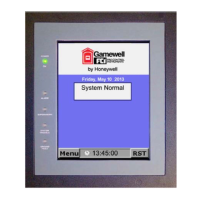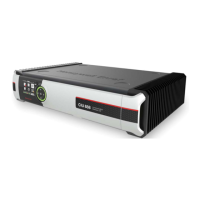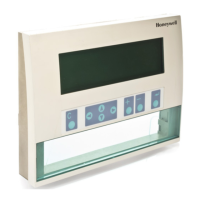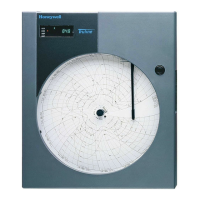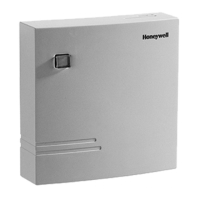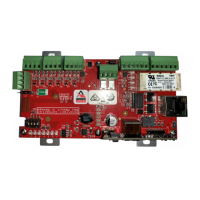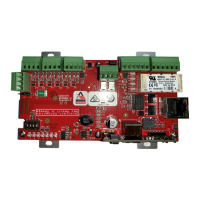High-Speed NFN Manual — P/N 54013:C4 8/8/2019 13
Network Wiring for Ground Fault Detection Network Configurations
• EXAMPLE 2: By setting the ground fault detect switch (SW4) on the repeater to the OFF position, both nodes may provide their
own ground fault detection (refer to Figure 3.6). The left node provides ground fault detection up to the repeater, and thus must be
one of the ground fault detection nodes defined on page 12. S2 (Port B) is set to the ON position to enable ground fault detection on
the left HS-NCM.
The Port A switch on the right HS-NCM is also set to the ON position, providing ground fault detection up to the repeater. This
node must also be one of the ground fault detection nodes defined on page 12.
• EXAMPLE 3: Ground fault detection is effective for a maximum of two serially connected (point-to-point) repeaters. Therefore, a
maximum of five HS-NCMs configured as repeaters can be connected in series when ground fault detection is required. Figure 3.7
shows how the ground fault detection switches must be arranged in order to achieve this maximum configuration.
• EXAMPLE 4: The HS-NCM can be shared between two network nodes. In this example, the HS-NCM is shared between two
nodes with separate power supplies. Ground Fault detection should only be enabled for one of the power supplies.
NFNPTP3Prv2.WMF
Power Supply
GF Detect
Enabled
Power Supply
GF Detect
Enabled
Twisted-Pair Wire
Twisted-Pair Wire
Ports
Ports
Ports
Network Node
Network Node
OFF
GF Detect
Enabled
GF Detect
Enabled
Figure 3.6 Point-to-Point (EXAMPLE 2)
NFNPTP4rv3.WMF
HS-NCM
Node
HS-NCM
Node
HS-NCM
as a
repeater
HS-NCM
as a
repeater
GF Detect
Switches
enabled
Both GF
Detect
Switches
enabled
Both GF
Detect
Switches
enabled
GF Detect
Switches
disabled
Figure 3.7 Maximum Point-to-Point Series Repeater
Ground Fault Pass-Through Configuration (EXAMPLE 3)
Power Supply
GF Detect
Enabled
Power Supply
GF Detect Dis-
abled
Network Node
Network Node
NFNshareHSNCM.wmf
NUP
Port
NUP
Port
NUP
Ports
Figure 3.8 HS-NCM Shared Between Two Network Nodes with Separate Power Supplies (EXAMPLE 4)
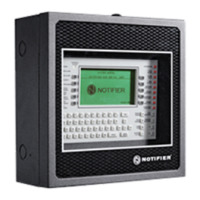
